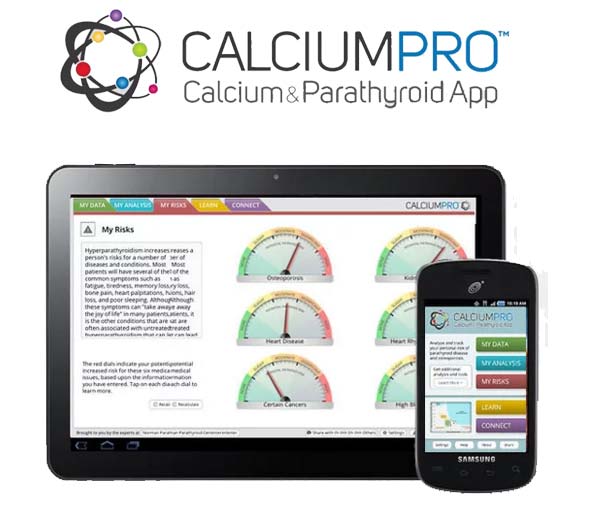Hyperparathyroidism Surgery: 5 things to know

If you are reading this blog, it is likely that you or someone you love has been told they need hyperparathyroidism surgery. At the time most people are given this news by their doctor, they have no idea what hyperparathyroidism is, or even know what parathyroid glands are. If you’re just starting your journey to learn more about such a broad topic like hyperparathyroidism surgery, it can be daunting because there are so many different paths from this starting point. Do not feel alone! Many people have taken these first steps towards hyperparathyroidism surgery and my goal is to help you feel more familiar with some of the first issues that get raised by people going through this.
Hyperparathyroidism Surgery: 5 things to know
1) What is hyperparathyroidism surgery?
2) What leads to hyperparathyroidism surgery?
3) Who does hyperparathyroidism surgery?
4) What different types of hyperparathyroidism surgery are there?
5) If I choose not to have hyperparathyroidism surgery, what are the risks of living with the disease?
1) What is Hyperparathyroidism Surgery?
Simply put Hyperparathyroidism Surgery refers to any operation on overactive parathyroid glands. People have four parathyroid glands, each of which are usually the size of a grain of rice, and can be located from the base of the jaw, to the top of the heart, though most are in the neck, close to the thyroid gland. Parathyroid glands control your calcium level by making a hormone called PTH (Parathyroid Hormone).
There are three types of hyperparathyroidism, each of which can lead to a surgery, and multiple different types of surgeries that can be done, but at its core Hyperparathyroidism Surgery refers to any operation on overactive parathyroid glands, and the goal is to get a person’s PTH and calcium to be normal after their operation.
2) What Leads to Hyperparathyroidism Surgery?
Hyperparathyroidism is blanket term that applies to three different conditions that all have one thing in common: a PTH that is higher than it should be. When the PTH is too high the main affect is that calcium is pulled out of the bones, and put into the blood. This can lead to a number of problems.
The most common type of hyperparathyroidism is Primary Hyperparathyroidism. This disease happens when a tumor, which just means growth or mass (and is almost always benign), grows on one or more of the parathyroid glands. This tumor is making excess PTH and the goal of hyperparathyroidism surgery is to take abnormal glands out, leaving normal glands behind, so the PTH will drop back to normal. The following video is an excellent introduction to this disease and will help you understand it better.
Secondary Hyperparathyroidism is a different disease entirely. In secondary hyperparathyroidism a person has some condition that is causing a low blood calcium level. Examples include renal failure, “calcium leak syndrome,” gastric bypass surgery and chronic diarrhea. Normal parathyroid glands sense this low blood calcium level and respond by making more PTH in an effort to raise the calcium up to normal. Hyperparathyroidism surgery is usually not needed for patients with secondary hyperparathyroidism, medical treatment typically works. Unfortunately such non-operative management won’t work for everyone and hyperparathyroidism surgery will be needed for some.
If Secondary Hyperparathyroidism goes on for long enough without treatment, the poor parathyroid glands get overstimulated by the low calcium pushing them to make more and more PTH. This overstimulation causes all the parathyroids to grow, make too much PTH and the calcium starts to go up. So when someone starts with secondary hyperparathyroidism their calcium is low and PTH is high; when they transition to tertiary hyperparathyroidism, their calcium rises to normal and then high. Patients with tertiary hyperparathyroidism have hyperparathyroidism surgery to decrease their PTH levels.
3) Who does Hyperparathyroidism Surgery?
Hyperparathyroidism surgery is done all over the US and all over the world. Sadly this common disease is ofter misdiagnosed, and even when diagnosed most patients never get
the advice they need to get hyperparathyroidism surgery. Even despite this state of affairs there are so many people suffering from this disease that many surgeons do this type of operation in varying volumes and in different ways.
Hyperparathyroidism Surgery is done by surgeons who completed either General Surgery training or Ear Nose and Throat (ENT) training. In some places in the US, specialized surgeons are not available so in certain cases general surgeons or ENTs may do a few hyperparathyroidism surgeries scattered amongst their many other types of cases. In the US most studies that refer to “high volume” parathyroid surgeons are only referring to surgeons who do more than 20 parathyroid surgeries A YEAR. This indicates that most surgeons doing this operation don’t do much of it.
Surgeons may also do more specialized training. For general surgeons this would be an Endocrine Surgery Fellowship. The goal of such surgeons is to focus more on thyroid, parathyroid, adrenal and pancreatic surgery. Most endocrine surgeons do mostly thyroid surgery, but will still do more parathyroid surgery than non-specialized surgeons. Only a few surgery practices in the US will do more than 150 parathyroid surgeries per year. So even the surgeons who do more than typical, still aren’t doing very much.
This is important because the more parathyroid surgeries you do, the safer it gets, and the more likely you are to cure someone.
4) What different types of Hyperparathyroidism Surgery are there?
Parathyroid surgery has been going on for around 100 years now, but much has changed. In the traditional parathyroid surgery the neck was “explored.” Surgeons knew the parathyroid glands could be from the base of the jaw down into the chest but thought they could be “anywhere.” Making matters worse surgeons were not familiar with details of neck anatomy so they needed to “expose” a lot of space to know where they were. These traditional hyperparathyroidism surgery incisions were big, muscles were cut, lots of tissue was disrupted, recovery times were long, worst of all cure rates weren’t great and complications were higher than they needed to be.
In an attempt to decrease the scope of surgery and operative times many surgeons use what is known as a “focused technique.” For this hyperparathyroidism surgery a surgeon attempts to find a parathyroid tumor with imaging. During the surgery this imaging serves as a map for the surgeon to tunnel down to where the scan shows the tumor, in the hopes of not having to go anywhere else in the neck. After removing the parathyroid a PTH is checked in the operating room to see if it drops. If the PTH comes down the surgery stops, if it stays high, the surgeon will either stop the operation and refer to a specialist, or they will explore the neck.
There are some drawbacks of the focused technique as well, which is a whole discussion in and of itself, but I’ll briefly touch on a few things. Sometimes the scans are wrong which can lead to a normal parathyroid gland being removed or an injury due to “digging” for something that isn’t there. Sometimes patients have more than one tumor, but the PTH drops when the first tumor comes out even though another tumor remains. Sometimes a patient only has one tumor, it is removed, but the PTH doesn’t come down, leading to an unnecessary “exploration.”
The mini-parathyroidectomy as an option for hyperparathyroidism surgery was pioneered by Dr Norman starting in the early 90’s, and has been refined over time. The central idea behind the mini surgery is that the parathyroid glands can not be “anywhere.” There are certain places where they are more likely to be than others. For each individual parathyroid gland the surgeon
starts in the most likely location and then proceeds to the next most likely location until that parathyroid is found, normal or tumor, and then the surgeon moves on to the next parathyroid gland. This technique of hyperparathyroidism surgery allows the surgeon to quickly find all four parathyroid glands without disturbing areas of the neck where the parathyroid glands can’t be located.
The best analogy I can give you to illustrate these three different techniques for surgery is imagine if I told you there was a pot of gold hidden somewhere in a room and that if you didn’t find it your loved one might die 5 years earlier than if you did find it. Then I send you into that room with a bunch of power tools. Imagine what that room will look like if the pot of gold ISN’T IN THAT ROOM. If you use the traditional hyperparathyroidism surgery approach you’ll open the door all the way, walk in, tear up every floor board, knock down the walls and destroy all the furniture. If you used the focused technique you’ll dig a tunnel to where the scan told you to go, and once you got there, finding no tumor, you’ll have to make some tough decisions.
If you use the mini-technique, you’ll open the door a small amount, reach in and only check the five places in that room where experience tells you the pot of gold could possibly be, and then you will get out of that room without disturbing anything else.
5) If I choose not to have Hyperparathyroidism Surgery, what are the risks of living with the disease?
The good news is that hyperparathyroidism is a very slow to progress disease. Most patients will have this for years before they even get diagnosed (if they ever do), and some people won’t have symptoms or complications for years more. Sadly that is the end of the good news.
Untreated hyperparathyroidism can lead to a number of symptoms that decrease a person’s quality of life. The most common are fatigue and difficulties with concentration, but there are many possibilities. Without hyperparathyroidism surgery this condition can also cause bone heart and kidney disease. In other words it can lead to heart attacks, heart failure, heart valve disease, strokes, blood clots, kidney failure, kidney stones, gastrointestinal problems, osteoporosis, an increased risk of cancer and a shorter life expectancy.
This is why we take this disease seriously. If someone has hyperparathyroidism they should be evaluated by a specialist to determine if surgery is indicated. If they have already had hyperparathyroidism surgery and that surgery was not successful, then they should remain under the care of an expert surgeon who can treat them appropriately and pursue the missing tumor until they are cured.
Suggested Reading
Normal Parathyroid Function
Difference between thyroid and parathyroids
Diagnosing Hyperparathyroidism
10 Things to know about hyperparathyroidism
Secondary Hyperparathyroidism
Additional Resources:
- Learn more about the Norman Parathyroid Center.
- Read more on the Parathyroid blog.
- Become our patient.
- Check out our sister surgeons at the Clayman Thyroid Center, the Scarless Thyroid Surgery Center and the Carling Adrenal Center. We are now united under one roof, operating at the Hospital for Endocrine Surgery.




